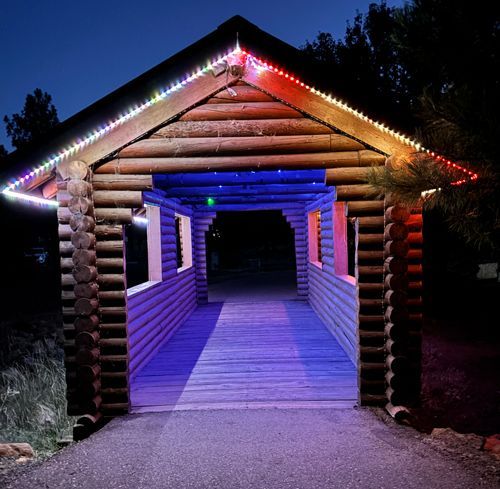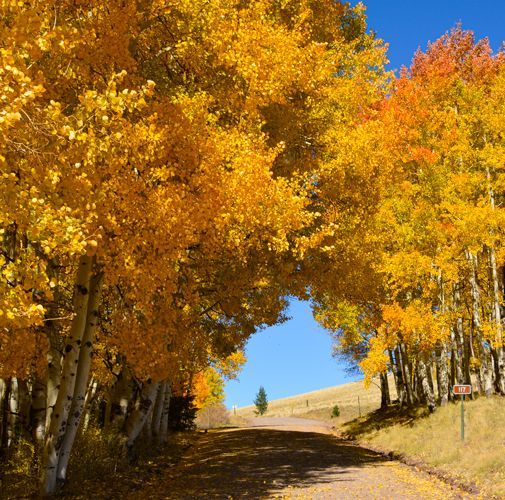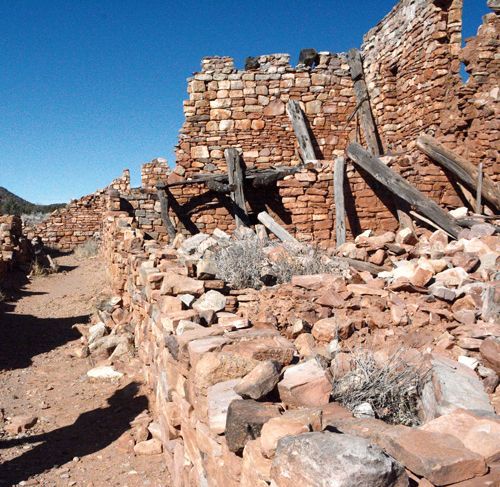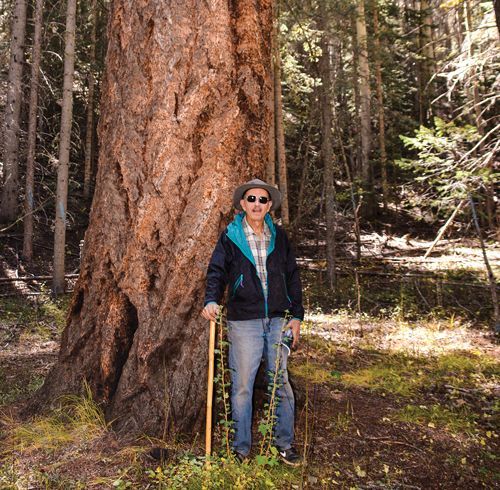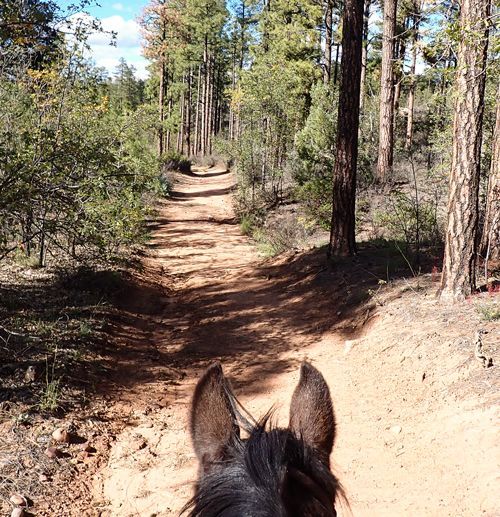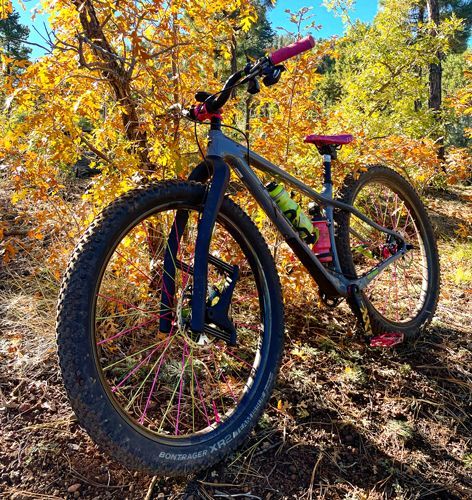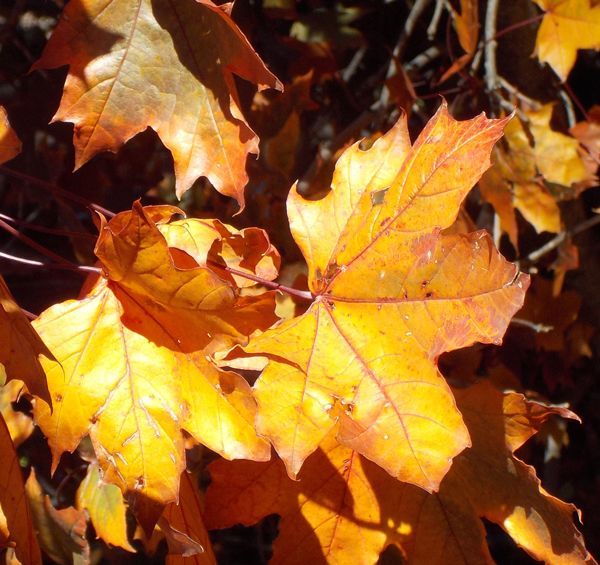The variety of nest types and strategies for raising chicks does not come close to matching the sheer diversity in the over 500 species of birds who make Arizona home.

By Dan Groebner
Has anybody been seeing birds flying with a purpose and carrying long slender sticks or grass blades in their beaks or talons? These are not hungry vegetarians with their takeout meals on their way home. Well, not really. They are on their way home, but they are actually carrying part of their home with them, as they are probably engaged in nest building or maintenance.
Nests can actually be described better as maternity wards, since their primary purpose is to provide a safe place to rear young from eggs to independent fledglings. Some birds actually do nest in large groups near others in trees, like a hospital ward, called colonial nesters, such as great blue herons, cormorants, and black-crowned night herons.
Nests differ from a roost, where they are trying to get out of the weather and lower the risk from predators at night. Even though roosts can be used almost year-round, they do not include any constructed structure like a nest, but usually are found in thicker vegetation with more cover from the elements.
Although we are only talking about bird nests, other critters will readily make or take over a nest, mostly for shelter and sometimes for raising youngsters. In the White Mountain and Mogollon Rim area, nests and cavities in trees will be used by raccoon, porcupine, squirrels, rodents, snakes, and lots of bugs if moist enough.
Different birds will usually make characteristic nest types for their species, that is, you can often identify the bird who made the nest by what it looks like. There are always exceptions, as some bald eagles in Arizona have nested on cliff faces like a golden eagle typically does, and some goldens have used large stick nests in big ponderosa trees like a bald eagle would. But usually a nest is relatively distinctive and often has discarded feathers of the hosts nearby. Obviously, the best way to identify the current tenant of the nest is to observe the daily comings and goings of the residents from a distance that doesn’t disturb them.
To make it easier to help identify nest owners, it is helpful to categorize the various types of nests that birds build. These include typical stick and grass cupped nests, as well as cavity, mud, ground, and artificial boxes or platforms.
Stick and grass nests are typical of most bird species, maybe because they can be constructed of so many locally sourceable raw construction materials in so many configurations and in so many tree and shrub species. Therefore, it can be a challenge to distinguish some nests from each other, but many are still very distinctive.
Large stick nests made by bald eagles and osprey can be built in the same general areas near lakes and streams, but the osprey nests are usually up higher in the tree, often on the tip of a dead snag. Eagle nests usually are on a more sturdy branch since they plan for additions in future years as they consider themselves long-term homeowners, whereas the osprey aren’t afraid to make a new nest when the old one blows out of the tree, having more of a renter attitude.
Hummingbirds are masters in making nests of local materials that blend in and effectively camouflage their nests. Orioles and some vireos have very distinctive nests, dangling precariously from the ends of thin tree branches.
Some birds prefer a little more cover and don’t have a problem with claustrophobia, so they are found in cavities of hollowed out trees or bird house boxes built to the correct dimensions. Birds like woodpeckers, chickadees, and flickers will excavate their own holes, while many other cavity nesters, like bluebirds, wrens, and kestrels, move into holes made by other critters. The diminutive black-capped chickadee can whittle out a home from a soft spot on a tree that any self-respecting white-breasted nuthatch would be proud of.
Instead of excavating a nest out of a rotten tree or making a stick nest, some birds prefer to work in clay and mud to create more of an adobe style house, often adhered to the vertical and sometimes overhanging face of a cliff. These globular nests can look like a patch of gourds growing on the side of a cliff with only small holes for doors revealing the inhabitants coming and going. Cliff and barn swallows and black phoebes make nests mostly of mud.
Belted kingfishers and bank swallows excavate their own nests from cut banks or the exposed sandy sides of rivers and washes. Kingfishers can tunnel back over 6 feet before making a nesting chamber and bank swallows pepper a cliff side with nest cavities, making it look like it was used for cannonball target practice.
Nests of the first birds were undoubtedly on the ground, like their reptilian ancestors. But as they became warm-blooded and had to incubate their eggs with their own body heat to keep the eggs viable and growing, birds couldn’t just bury their clutch of eggs in the sand or dirt and leave them. Incubating eggs on the ground exposed the adults and eggs to higher predation rates from carnivores so some species evolved anti-predator behaviors such as building nests in trees or distracting behaviors, such as the broken wing “act” of the female killdeer when you approach her nest.
Although they are in the minority, there are many birds that successfully raise their young from ground nests. Besides feigning injuries, ground nesters are masters of camouflage, with killdeer eggs looking exactly like the rounded gravel rocks that they are laid in. A nest cup would obviously stand out on a gravel bar, so the killdeer gets the prize for the “Leave No Trace” nest.
Western meadowlarks make a dome-shaped nest on the ground in grasslands, fields, and prairies that is totally covered from above with a loose dome concealing the side entrance from the larger predators looking down. Burrowing owls are both ground and cavity nesters as they re-use abandoned prairie dog and badger burrows. When danger appears, they usually duck into the tunnel complex, but can also fly away. Mountain plovers are also ground nesters that have been known to use cow manure chips around a modest scrape on the ground to contain the eggs.
Many birds readily take to houses that we build for them to nest in, from bluebirds boxes to platforms made specifically for eagles and osprey. Even colonial, or large groups of clumped nests, can be artificially created for birds like purple martins and sometimes violet-green swallows.
Artificial nest boxes not only provide valuable cavity nesting habitat that is in short supply these days, they also provide the opportunity to study, document, and appreciate the hard work involved in raising a clutch of chicks. Cornell University maintains the NestWatch Program where citizen scientists can report the results of any activity at nest boxes they erect and monitor. Monitoring across a larger area can help detect population changes or habitat issues more reliably. If anybody is interested in monitoring or constructing any bluebird boxes, call Arizona Game and Fish at (928) 532-2308.
Not all birds defend their nests aggressively, and they can abandon their eggs or young if disturbed enough. That is why all occupied nests are protected from being disturbed, moved, or destroyed under the Migratory Bird Treaty Act, a federal law. After the birds are done using the nest, they can be removed, especially if they are making a mess with their droppings and causing a human health and safety issue.
Believe it or not, blackbirds and grackles can pose a human safety issue if they choose to nest near an area with high human activity. Some birds have been known to dive bomb people as they approach their nest in the spring and actually draw blood with a quick stab of their beaks!
As you can imagine, some birds can be more dangerous in defending their nests. If you are hiking in the woods and hear a high pitched, repeated cackling type call, it could be an agitated northern goshawk, making her strafing attack plans if you keep getting closer to her nest. These hawks, as well as great horned owls, can inflict serious damage, requiring stitches at the minimum in some cases. Fortunately, most people hear the goshawk warning calls or are not hiking in the late winter when owls are nesting.
In Southeast Asia, people actually seek out nests to make Birds Nest Soup, composed primarily of solidified swiftlet saliva, considered a delicacy to the locals. Fortunately, these swallow-like birds like to nest in remote, inaccessible areas and there are also efforts to captively breed the birds for their nests to make the practice more sustainable.
The variety of nest types and strategies for raising chicks does not come close to matching the sheer diversity in the over 500 species of birds who make Arizona home. However, since we live in prime diverse bird nesting habitat here in the White Mountains, our own backyards can support many species who all require something a little different to successfully raise their young. So those morning cacophonies that are beginning to wake us up earlier than usual are a great sound of a healthy forest!

